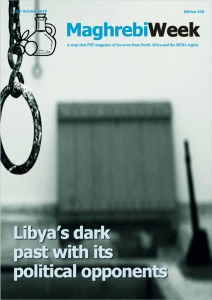South Africa puzzled as its helicopters found in Libya

The Libyan National Army led by Khalifa Haftar in the country’s East appears to have somehow acquired military helicopters, despite a UN arms embargo on the rival government, according to RFI, October 13.
As reported earlier in the South African newspaper City Press, the Government of National Stability (GNS) based in Benghazi managed to get a hold of, at minimum, four Gazelle helicopters of French origin. Problematically, they were first sold to South Africa under the condition that they would not be re-sold onto a third party, or be used by anyone for military purposes.
These new helicopters now outfitting the Libyan National Army were originally exported from South Africa aboard Russian cargo planes, bound for Jordan as per the planes’ flight logs. The helicopters had been completely de-militarised prior to leaving South Africa, however, following an investigation by the newspaper who tracked the suspicious flight paths of these Russian aircraft, found that the cargo of brand new helicopters had somehow arrived in Libya once photos emerged on social media a few weeks later of the aircraft in the North African country.

Flown out of South Africa on different flights over the course of two months, the Gazelles had reemerged online when officials in Libya’s East shared photos of the new helicopters on military parade, easily spottable due to their distinctive colouring.The only noticeable difference being the covering-up of the South African official registration numbers using the colours of the Libyan flag and stickers.
Yet another Russian cargo plane caused upset ten days ago when it unloaded a ‘mysterious cargo’ in Northern Libya, sparking similar poor reactions from South Africa.
It comes as little surprise that Russian cargo planes were the ones to ultimately deliver the new Helicopters to Field Marshal Haftar’s Libyan National Army. After all, Russian has been increasingly offering support to the rival government in Eastern Libya ever since the collapse of the Assad regime in Syria.
It is not difficult to find evidence of this switch either, with the Libyan National Army regularly holding military parades, open-source investigations reveal large amounts of Russian equipment present on parade, such was the case at one event near Benghazi earlier this year, which also showed-off another set of helicopters.
Although international efforts continue to try and mend the divide that has existed in Libya since the fall of Muammar Gaddafi in 2011, there continues to be an equally corrosive divide among the international community itself. The more widely recognised-including by the United Nations-government is based in Tripoli, under Prime Minister Abdul Hamid Dbeibeh, who seeks to exploit the country’s vast fossil fuel resources stabilise the nation’s economy and improve international relations. Meanwhile, a similar story unfolds on the country’s Eastern provinces with the alternative administration headed by GNS Prime Minister Osama Saad Hammad Saleh (though power more resolutely lies with Field Marshal Haftar due to his control of the Libyan National Army)
RFI (Radio France Internationale), The Atlantic Council, X (Formerly Twitter), Maghrebi.org
Want to chase the pulse of North Africa?
Subscribe to receive our FREE weekly PDF magazine














